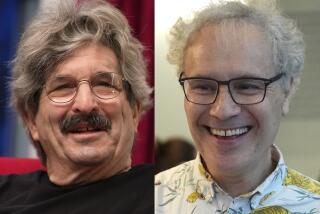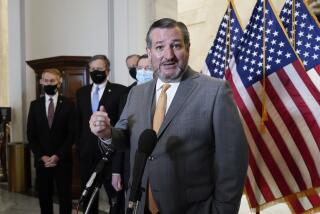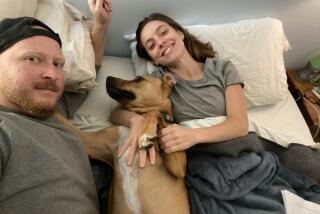In vitro fertilization innovator Robert G. Edwards wins Nobel Prize
British biologist Robert G. Edwards, whose contributions to the technology of in vitro fertilization have made more than 4 million couples parents, has been awarded the 2010 Nobel Prize in physiology or medicine.
Working with Dr. Patrick Steptoe, Edwards, now 85, developed the techniques for removing mature eggs from a woman’s ovaries, fertilizing them in test tubes and inducing them to begin dividing before implanting them back in the mother.
Their efforts yielded the July 25, 1978, birth of Louise Brown, the first “test tube baby,” both demonstrating the success and the safety of the technique and bringing hope to infertile people all over the world. An estimated 10% of all couples are unable to conceive naturally.
Edwards, an emeritus professor at Cambridge University, is in failing health and was unable to accept the early morning call from Sweden’s Nobel Committee. “I spoke to his wife, and she was delighted, and she was sure he would be delighted too,” the committee’s secretary, Goran Hansson, told a Stockholm news conference.
In a statement released by Bourn Hall, the Cambridge in vitro fertilization, or IVF, clinic founded by Edwards and Steptoe, Ruth Edwards said, “The family is thrilled and delighted that Professor Edwards has been awarded the Nobel Prize for medicine for the development of IVF. The success of this research has touched the lives of millions of people worldwide, and his dedication and single-minded determination despite opposition from many quarters has led to successful application of his pioneering research.”
Steptoe was not named as a recipient of the $1.5-million prize because Nobel rules require that an honoree be alive at the time of the award. He died in 1988, 13 years before New York’s Lasker Foundation awarded Edwards its top award, which is often viewed as a precursor to the Nobel.
Critics have questioned why it has taken so long to honor the pair’s achievements. Some suspect that it is due in part to the Vatican’s disapproval of the technique because it physically separates the conjugal act and conception. Many other religious groups also initially expressed concerns about the ethics of IVF, and Britain’s Medical Research Council refused to fund the experiments, spurring Edwards and Steptoe to obtain private grants.
Most such groups have since changed their positions, and the Catholic Church remains the only major group opposed to IVF. In an e-mail statement Monday, Monsignor Ignacio Carrasco de Paula, head of the Pontifical Academy for Life, said that the award “is not completely out of place.” But he criticized the research for opening the door to the destruction of embryos and the creation of a commercial market for human eggs. He also said the research raised questions because it did not address the underlying problem of infertility, but only circumvented it.
Edwards began experimenting with IVF in the mid-1950s after receiving his doctorate from the University of Edinburgh in Scotland. Other researchers already had shown that rabbit eggs could be successfully inseminated in the test tube, leading to viable offspring, and Edwards initially assumed that human eggs would be little different.
It turned out, however, that human eggs had a very different life cycle from that of rabbit eggs. Over the next 20 years, Edwards made a number of fundamental discoveries, clarifying how human eggs matured, how different hormones regulated their maturation and at which times the eggs could be inseminated successfully. He also determined the conditions under which sperm were activated and had the capacity to fertilize eggs.
By 1969, he had successfully fertilized an egg in a test tube — or, more accurately, in a laboratory petri dish. But the egg would not proceed beyond the first cellular division. Edwards reasoned that the egg needed to mature in the womb. He contacted Steptoe, a gynecologist who was one of the pioneers in laparoscopy, in which a thin telescope inserted through the vagina is used to observe the ovaries and manipulate eggs.
After much further work, the pair performed the first successful IVF on Lesley Brown, who came to the clinic after she and her husband, John, had tried for nine years to have a child. Baby Louise was born, and a new world was opened.
“Louise’s birth signified so much,” Edwards said at her 25th birthday celebration in 2003. “We had to fight a lot of opposition, but we had concepts that we thought would work, and they worked.”
Louise recently had her own child, the old-fashioned way. In a statement released by Bourn Hall, she said, “It’s fantastic news; me and Mum are so glad that one of the pioneers of IVF has been given the recognition he deserves. We hold Bob in great affection and are delighted to send our personal congratulations to him and his family at this time.”
An estimated 142,000 IVF procedures are performed each year in the U.S. at a cost of about $4 billion. The success rate is about 1 in every 5 procedures, about the same rate as conventional attempts to become pregnant.
thomas.maugh@latimes.com






